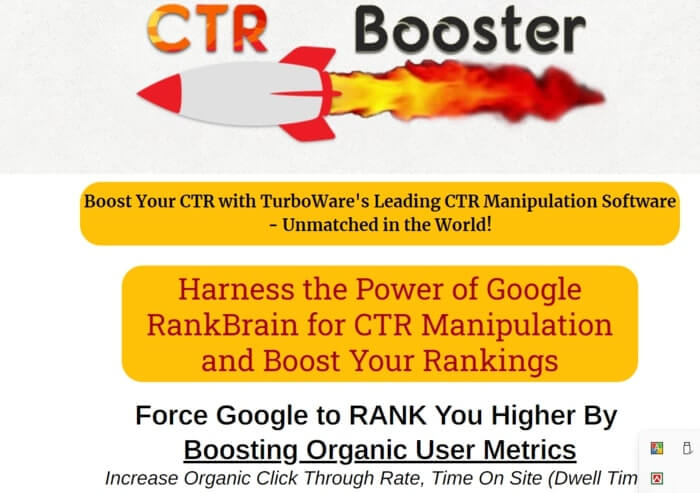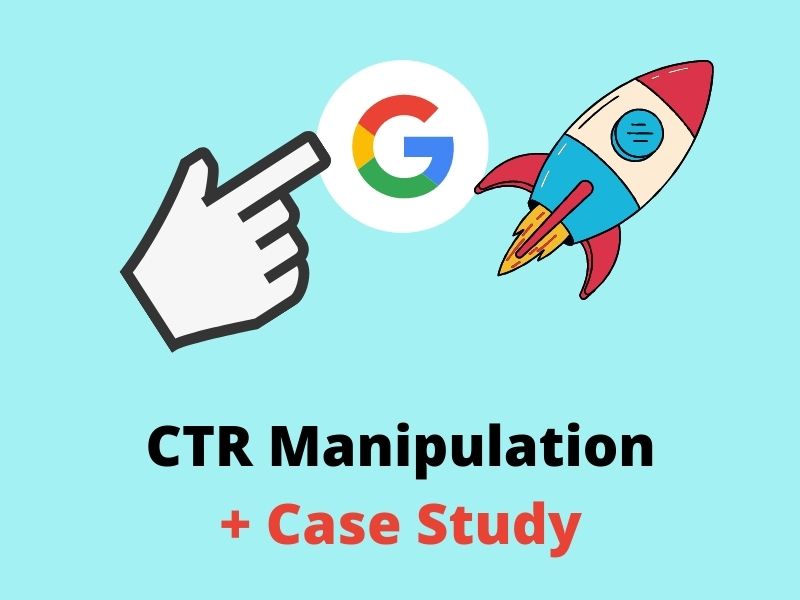Raise Your Service Presence with Our CTR Manipulation Service
Raise Your Service Presence with Our CTR Manipulation Service
Blog Article
Maximizing Organic Click-Through Rates With CTR Control
The optimization of organic click-through prices (CTR) is a nuanced endeavor that hinges on recognizing both user psychology and effective web content presentation. The landscape is swarming with mistaken beliefs and oversimplifications regarding what truly drives CTR.
Comprehending Click-Through Rates
Understanding click-through prices (CTR) is necessary for assessing the performance of internet marketing methods. CTR determines the percentage of customers that click on a particular link or advertisement compared to the complete number of customers that view it. A higher CTR indicates that the material is engaging and pertinent to the target market, while a reduced CTR may signal a requirement for optimization.
To calculate CTR, separate the number of clicks by the variety of impressions and increase by 100. As an example, if an advertisement obtains 300 clicks out of 10,000 perceptions, the CTR would certainly be 3%. This metric is essential for evaluating various components of digital advertising, including seo (SEARCH ENGINE OPTIMIZATION), e-mail projects, and social media advertising and marketing.
Furthermore, evaluating CTR helps online marketers recognize which strategies yield the finest outcomes and which require refinement. By concentrating on boosting CTR, organizations can improve their web content's visibility and efficiency, causing enhanced web traffic and prospective conversions. Understanding the subtleties of CTR is foundational for any kind of online marketer intending to optimize their on-line existence and make best use of roi (ROI)

The Psychology of Customer Behavior
Customer behavior is dramatically influenced by emotional factors that determine how individuals interact with online web content. Understanding these factors is vital for enhancing click-through rates (CTR) in natural search results.
Psychological feedbacks also substantially effect customer actions. Web content that reverberates psychologically can set off a sense of urgency or curiosity, motivating users to click. Additionally, social evidence-- such as customer testimonials or scores-- can improve depend on and encourage involvement, as individuals usually seek to the actions of others to educate their own decisions.
Furthermore, the principle of shortage can drive clicks - GMB CTR Manipulation. Limited-time offers or exclusive content produce an anxiety of losing out (FOMO), compelling customers to act rapidly. Recognizing these mental chauffeurs enables marketing experts to produce even more compelling web content that reverberates with their target market
Efficient CTR Manipulation Strategies
Leveraging mental insights can considerably improve click-through prices (CTR) with targeted control strategies. One of one of the most effective approaches is making use of compelling headings that stimulate interest or urgency. Wording titles as concerns or incorporating numbers can attract more interest, motivating customers to click.
Another technique involves enhancing meta descriptions to create a feeling of relevance and immediacy. By clearly describing the remedies or benefits offered in the web content, you can involve potential readers and convince them to click. Furthermore, utilizing power words-- such as "exclusive," "proven," or "cost-free"-- can improve the charm of your content.
Visual elements likewise play an essential duty. Including distinctive images or thumbnails can attract users in and boost CTR. A/B testing different visuals can help determine which photos reverberate ideal with your audience.
Finally, making sure that your content promises deliverable worth GMB CTR Manipulation results in greater CTR. When individuals regard that clicking will certainly supply them with significant insights or solutions, they are most likely to involve. By using these strategies thoughtfully, marketers can efficiently control CTR to their advantage while maintaining moral criteria.
Typical Myths Concerning CTR
A number of mistaken beliefs border click-through rates (CTR) that can lead online marketers to make misguided decisions. While a high CTR recommends that more users are clicking, it does not guarantee sales or conversions.
One more typical belief is that CTR is an isolated metric. In truth, CTR needs to be evaluated along with other efficiency indicators, such as bounce rate and conversion rate, to gain an all natural view of campaign success.
In addition, some marketing experts presume that maximizing for CTR alone is enough. Nonetheless, focusing specifically on CTR can lead to clickbait strategies that might bring in clicks however fail to involve customers meaningfully. This technique can hurt brand name online reputation and cause lower retention prices
Last but not least, there is an idea that CTR methods are globally reliable. The fact is that ideal CTR tactics can vary dramatically throughout sectors and target market, demanding tailored techniques for different market sectors. Recognizing these misconceptions is critical for developing reliable CTR techniques that straighten with overarching advertising goals.
Determining CTR Success
Although high click-through rates (CTR) can show effective involvement with material, gauging their true success calls for a thorough evaluation of several elements. It is important to recognize the context in which the CTR is accomplished. A high CTR on a misleading title may not equate to meaningful involvement or conversions, inevitably mirroring poorly on the brand's credibility.
2nd, examining the resource of traffic is important. Organic traffic from search engines can represent a durable web content technique, while clicks from unimportant resources may suggest a lack of targeting. Additionally, gauging the succeeding customer actions is important; evaluating metrics such as bounce rate, time invested on page, and conversion rates can provide deeper insights into the top quality of the interaction launched by the CTR.

Conclusion

The optimization of organic click-through prices (CTR) is a nuanced venture that hinges on understanding both customer psychology and effective web content presentation. CTR determines the percent of individuals that click on a particular web link or advertisement compared to the total number of individuals that see it. A greater CTR indicates that the material is involving and pertinent to the target audience, while a lower CTR might signify a requirement for optimization.
Concentrating exclusively on CTR can lead to clickbait methods that may attract clicks yet fail to engage customers meaningfully. Additionally, determining the succeeding user habits is crucial; evaluating metrics such as bounce price, time invested on web page, and conversion rates can offer much deeper understandings into the high quality of the involvement initiated by the CTR.
Report this page